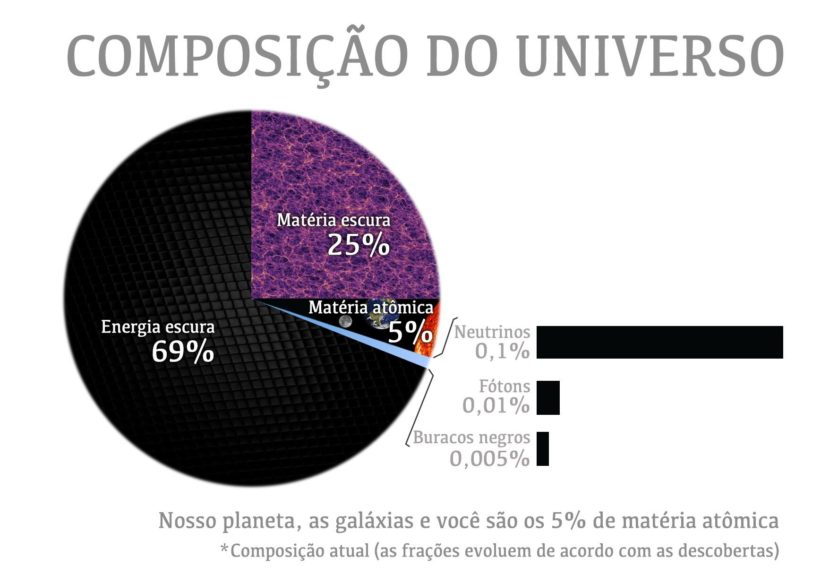The dark side of cosmology: Dark matter and dark energy
A simple model with only six parameters (the age of the universe, the density of atoms, the density of matter, the amplitude of the initial fluctuations, the scale dependence of this amplitude, and the epoch of first star formation) fits all of our cosmological data . Although simple, this standard model is strange. The model implies that most of the matter in our Galaxy is in the form of “dark matter,” a new type of particle not yet detected in the laboratory, and most of the energy in the universe is in the form of “dark energy,” energy associated with empty space. Both dark matter and dark energy require extensions to our current understanding of particle physics or point toward a breakdown of general relativity on cosmological scales.
John Archibald Wheeler, my academic great-grandfather, succintly summarized “geometrodynamics,” his preferred name for the theory of general relativity (1): “Spacetime tells matter how to move; matter tells spacetime how to curve.”
Cosmologists observe the motion of atoms (either in the form of gas or stars) or follow the paths taken by light propagating across the universe and use these observations to infer the curvature of spacetime. They then use these measurements of the curvature of spacetime to infer the distribution of matter and energy in the universe. Throughout this Review I will discuss a variety of observational techniques, but ultimately they all use general relativity to interpret the observations and they all lead to the conclusion that atoms, stuff that we understand, make up only 5% of the matter and energy density of the universe./.../

No comments:
Post a Comment